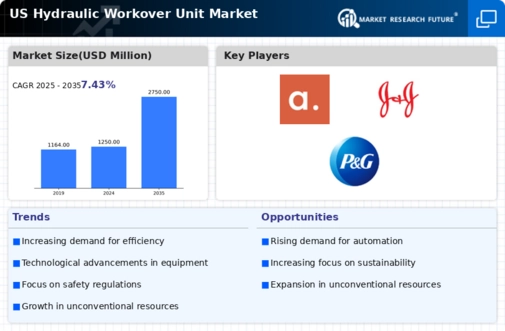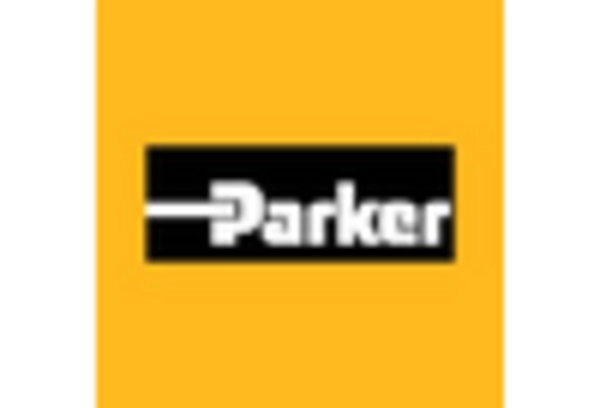Increased Oil and Gas Exploration
The hydraulic workover-unit market is experiencing growth due to heightened oil and gas exploration activities in the US. As energy companies seek to maximize production from existing wells, the demand for hydraulic workover units is likely to rise. In 2025, the US is projected to invest approximately $100 billion in upstream oil and gas exploration, which could lead to a 15% increase in the utilization of hydraulic workover units. This trend indicates that operators are increasingly relying on these units for efficient well maintenance and intervention, thereby driving market expansion.
Technological Integration and Automation
The hydraulic workover-unit market is benefiting from the integration of advanced technologies and automation. The adoption of digital tools and automated systems enhances operational efficiency and reduces downtime. In 2025, it is anticipated that around 30% of hydraulic workover units will incorporate automated features, which could lead to a 10% reduction in operational costs. This technological shift not only improves productivity but also attracts investment in the hydraulic workover-unit market, as companies seek to leverage these innovations for competitive advantage.
Regulatory Compliance and Safety Standards
The hydraulic workover-unit market is influenced by stringent regulatory compliance and safety standards imposed by US authorities. These regulations necessitate the use of advanced hydraulic workover units that meet safety and environmental requirements. As companies strive to adhere to these regulations, the market is likely to see a shift towards more sophisticated and compliant equipment. In 2025, it is estimated that investments in safety-compliant hydraulic workover units could account for 20% of total market expenditures, reflecting the industry's commitment to operational safety and environmental stewardship.
Rising Demand for Well Intervention Services
The hydraulic workover-unit market is driven by the increasing demand for well intervention services in the US. As aging oil and gas wells require maintenance and enhancement, hydraulic workover units play a crucial role in ensuring optimal production levels. The market is projected to grow by 12% annually as operators seek to extend the life of existing wells. This trend indicates a robust need for hydraulic workover units, as they are essential for performing various well intervention tasks, thereby solidifying their importance in the market.
Economic Recovery and Investment in Energy Sector
The hydraulic workover-unit market is poised for growth as the US economy recovers and investments in the energy sector increase. With a projected GDP growth of 3% in 2025, energy companies are likely to allocate more resources towards enhancing production capabilities. This economic environment may lead to a 25% increase in capital expenditures for hydraulic workover units, as firms aim to modernize their fleets and improve operational efficiency. Consequently, the hydraulic workover-unit market is expected to thrive in this favorable economic landscape.

















Leave a Comment